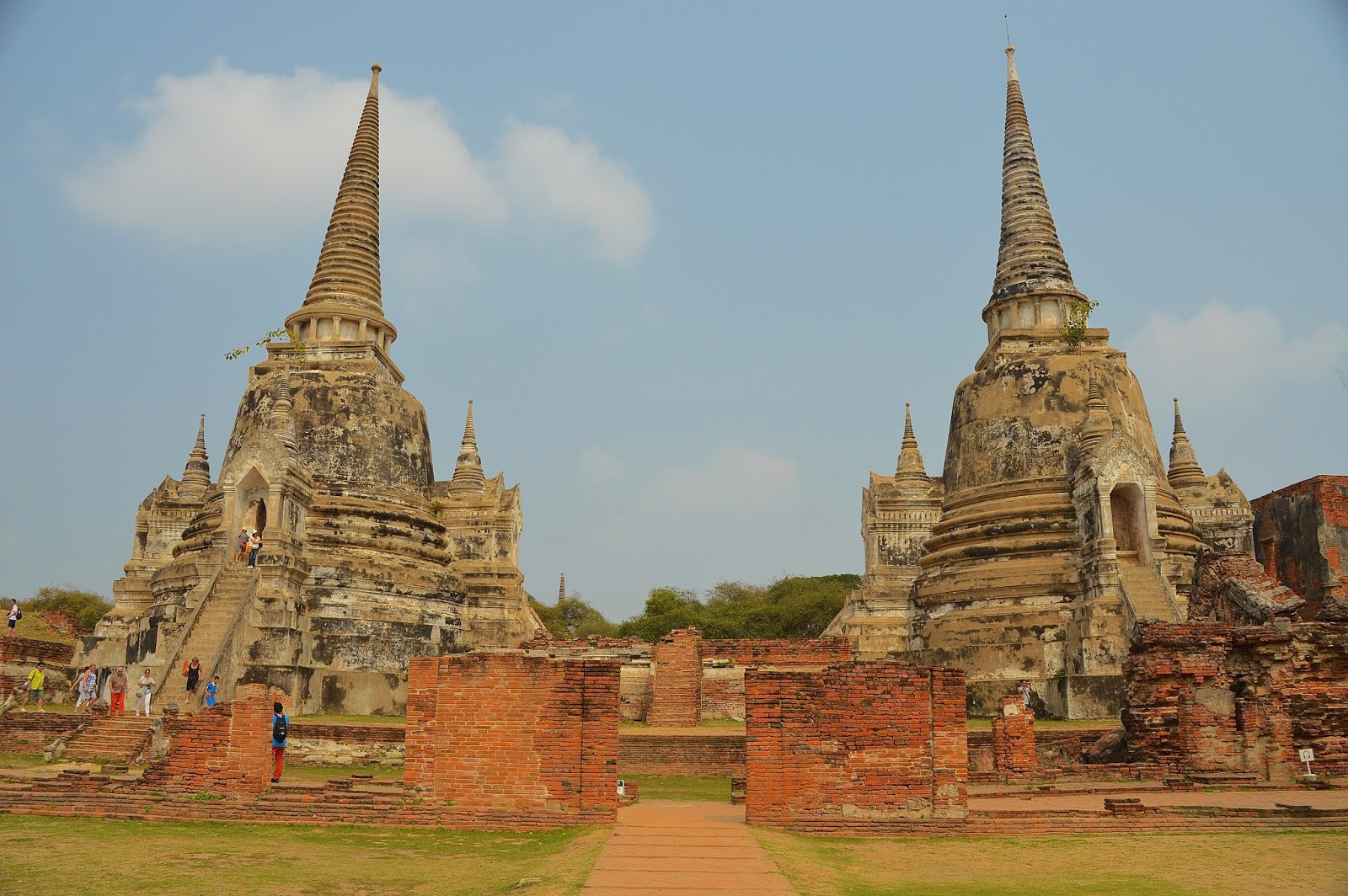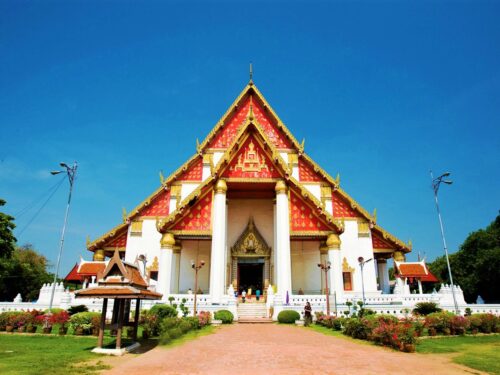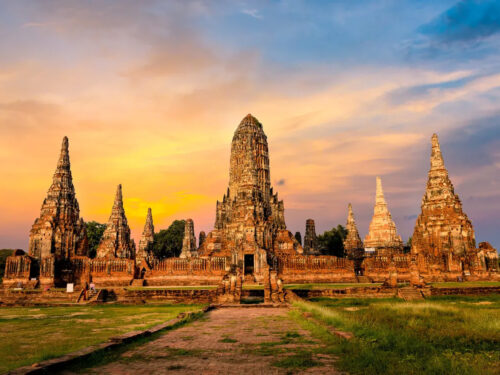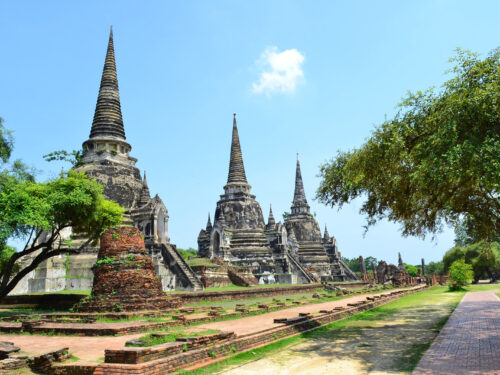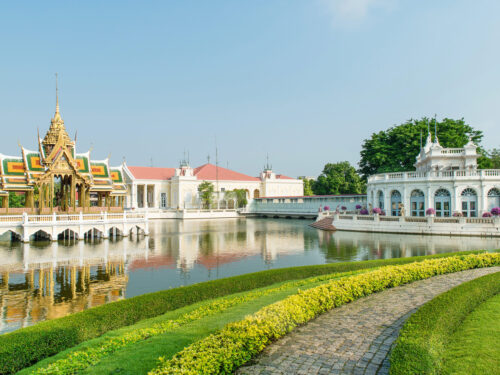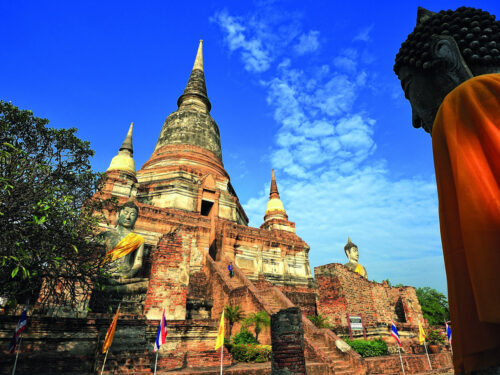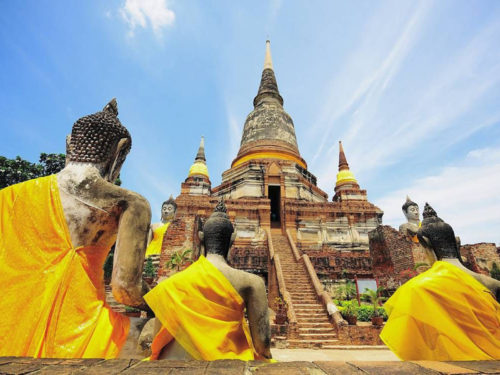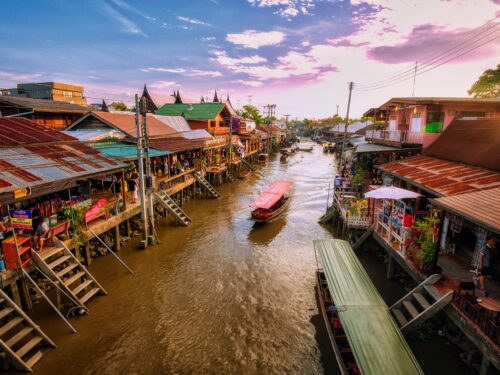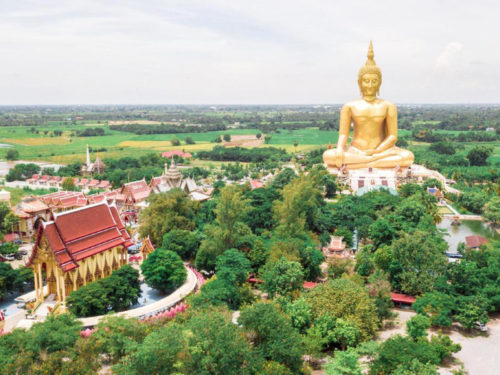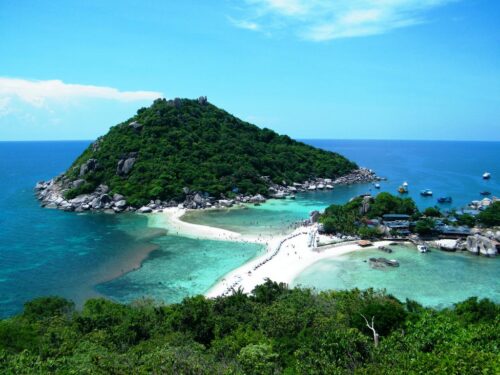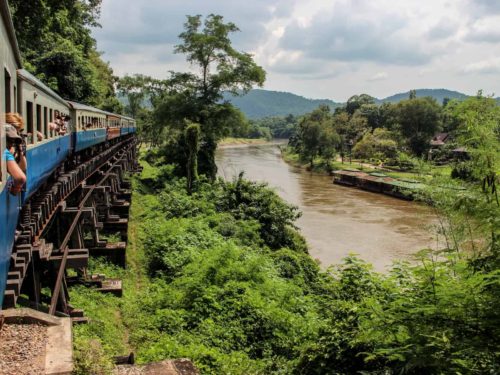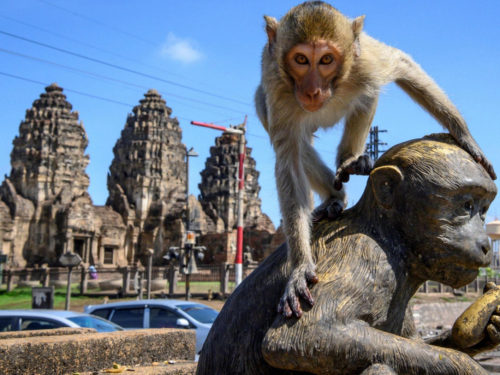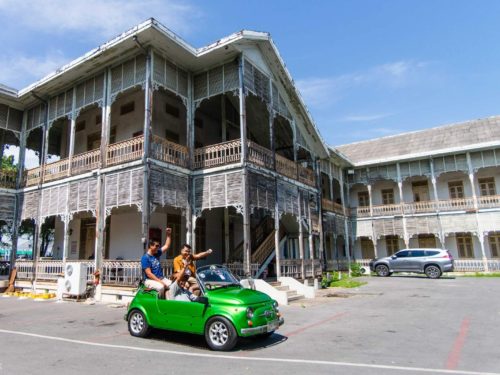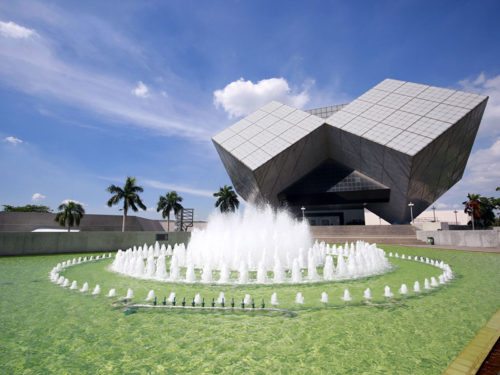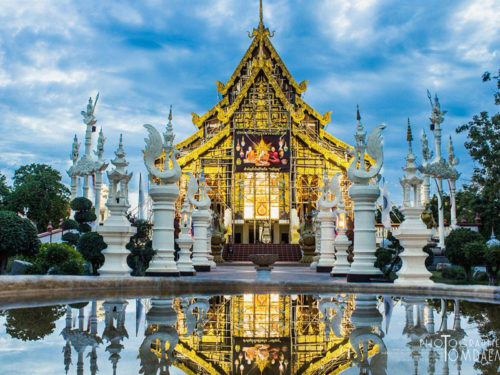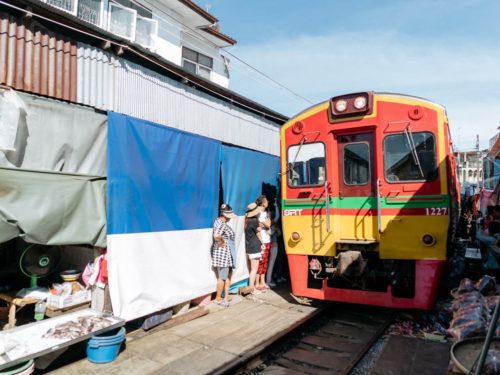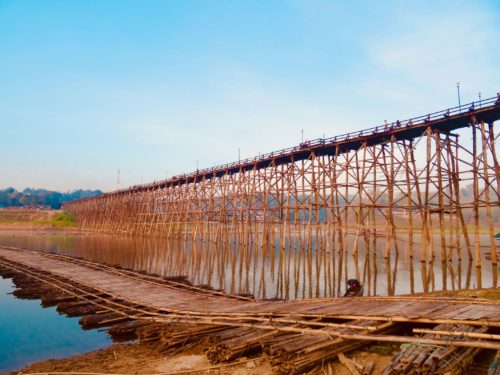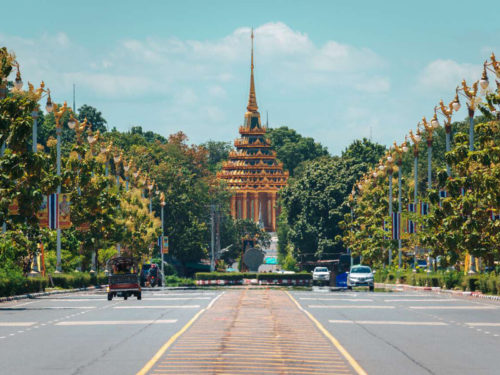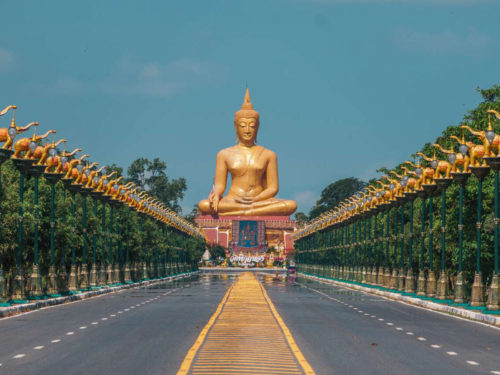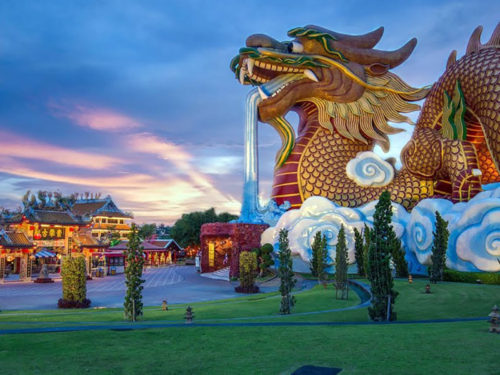Ayutthaya
Ayutthaya
Ayutthaya is located about 55 miles (89 km) north of Bangkok. The site of immense temples and other structures that are important both historically and architecturally, Ayutthaya was added to UNESCO’s World Heritage list in 1991.
History
From historical records, the Historic City of Ayutthaya was one of the biggest cities in the world at the time and a significant political, economic, and religious center. The Siamese Royal Court also maintained detailed documents, many of which were destroyed during the city’s siege, but some of them have survived and served as a crucial source of veracity. The same may be stated for the artifacts from the time, including wall paintings, sculptures, and writings written on palm leaves. The fresco paintings that are still present in Wat Ratchaburana’s crypt are very noteworthy. The property’s value is also influenced by the careful consideration given to the public’s accurate interpretation of the remains for educational purposes.
The second Siamese Kingdom capital, the Historic City of Ayutthaya, was established in 1350. From the 14th to the 18th centuries, when it was thriving, it became one of the biggest and most cosmopolitan cities in the world, as well as a hub for international trade and diplomacy. Three rivers encircled the island on which Ayutthaya was strategically situated, linking the capital to the sea. This location was chosen because it was above the Gulf of Siam’s tidal bore at the time, shielding the city from invasion by other countries’ seagoing vessels. Additionally, the area helped shield the city from recurring flooding.
Ayutthaya, once a significant hub of international diplomacy and trade, is now an archaeological ruin that is characterized by the ruins of tall prang (reliquary towers) and Buddhist monasteries of enormous size, which provide insight into the city’s former size and the magnificence of its architecture.
All of the major buildings in Ayutthaya were surrounded by roads, canals, and moats that were built out in a systematic and exacting grid. The plan made the most of the city’s location in the middle of three rivers and included a hydraulic water management system that was both highly innovative and unheard-of worldwide.
The city was strategically located at the head of the Gulf of Siam, halfway between India and China, and far enough upstream to be safe from Arab and European powers that were growing their influence in the area even as Ayutthaya was itself consolidating and extending its own power to fill the void left by the fall of Angkor. As a result, Ayutthaya developed into a significant hub for trade and commerce on both a regional and international scale, serving as a bridge between the East and the West. The French Court at Versailles, the Mughal Court in Delhi, the imperial courts of Japan and China, as well as other courts around the world, were among those with which the Royal Court of Ayutthaya exchanged ambassadors. When the capital of the rebuilt monarchy was relocated downstream and a new city in Bangkok was constructed, there was a deliberate effort to duplicate the urban design and architectural form of Ayutthaya. The task of constructing the new capital required the recruitment of many of Ayutthaya’s surviving architects and builders. This pattern of urban replication is consistent with the idea of urban planning, which holds that all communities should make an effort to imitate the ideals of the mythical city of Ayodhaya. The word “Ayutthaya” is still included in the official Thai name for Bangkok, which is still used in the title.
Weather
Given that it is the only time of year when the rainfall is remarkably reduced and the atmosphere is perfect, November through January is the finest time to visit Ayutthaya in Thailand. The winter seasons of December and January are often warm and muggy in Ayutthaya.
How to get there
If travelers desire to enjoy the breathtaking views along the route, it is the best choice to have a day trip by taking a daily scheduled train. Depending on the service you select, trains leaving from Bangkok’s Hualamphong train station will take 80 to 150 minutes to reach Ayutthaya. This is a gorgeous route with a hint of local flavor. The 8:30 am train, which travels to Ayutthaya in 77 minutes, is the day’s quickest train. It is noticeable that the railway station is not near those attractions, so to access the ruins, you can either take a ferry, tuk-tuk (a three-wheeled motorcycle taxi), or rent a motorbike.
Best attractions in Ayutthaya
Ayutthaya is a small and nice city where there any many old and beautiful temples to see. Only 86 kilometers to the north of Bangkok is Phra Nakhon Si Ayutthaya, where tourists may learn about and enjoy Thai history. Ayutthaya is situated on an “Island” that is bordered by the Chao ... More
Best things to do in Ayutthaya
We can suggest some top things to do for you here More detail

Best areas to stay in Ayutthaya
Best areas to stay in Ayutthaya
Are you in the midst of planning a trip to the captivating ancient city of Ayutthaya? If so, it’s crucial to determine the ideal location for your stay, as Ayutthaya offers an abundance of unique attractions to explore. Selecting one of the best areas to stay in Ayutthaya will undoubtedly enhance your overall experience. To […]
Best Restaurants & Bars in Ayutthaya
Many good restaurants and bar to try in Ayutthaya More details

Top best local restaurants in Ayutthaya not to be missed
Top best local restaurants in Ayutthaya not to be missed
Ayutthaya, Thailand’s former capital, boasts magnificent temples and a rich cultural heritage. But what about its food? This guide will lead you to top 10 best local restaurants in Ayutthaya, where you can indulge in regional specialties and create lasting memories. Immerse yourself in the city’s culinary tapestry, where history and flavor intertwine. Prepare to […]
Best excursions in Ayutthaya
You can visit many temples or take boat trip, cycling… More details

Welcome to Outward Journey in Vietnam & Thai 14 Days 13 Nights! It takes you on a journey through the cultural and ...
Theme: Thailand Vietnam Tours
from $1225

Welcome to Immerse in Brilliant lands of Bangkok & Northern Vietnam in 11 Days! Get ready for an adventure of a ...
Theme: Thailand Vietnam Tours
from $957

Welcome to this captivating tour that will take you on a mesmerizing journey through the rich history and cultural ...
Theme: Excursions
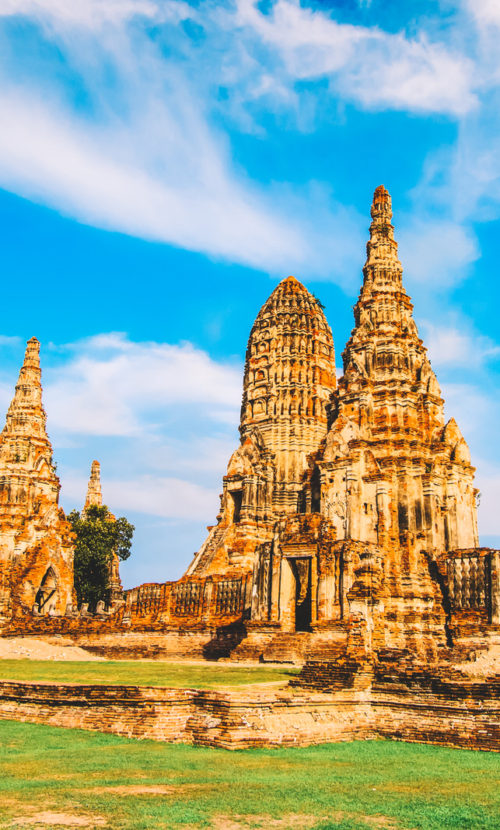
Embark on a remarkable journey through the heart of Thailand’s vibrant culture and captivating history with our ...
Theme: Excursions
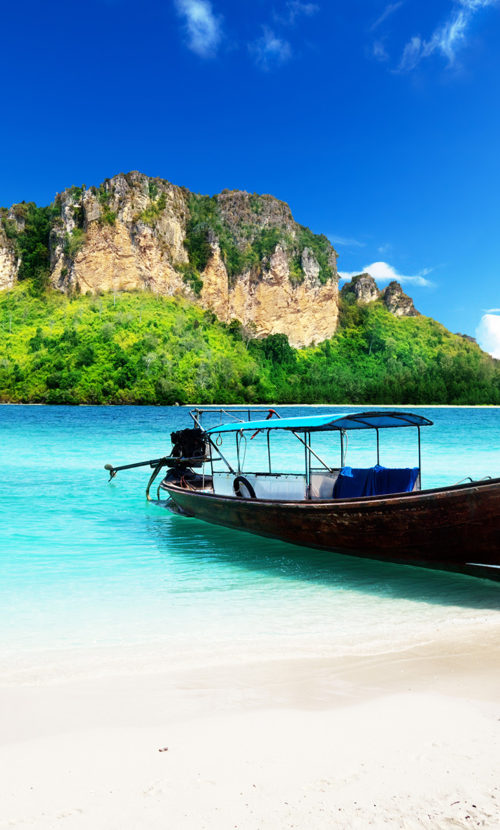
Retrospect and immerse in a back in time Thailand vacation, where captivating experiences await at every turn. Delve ...
Theme: Classic Highlights Thailand tours 18 days

The Treasure of Thailand 8 Days 7 Nights tour offers an incredible opportunity for tourists to explore the primary ...
Theme: Classic Highlights Thailand Tours 7 days
Best places for shopping in Ayutthaya
If you’re planning a trip to Ayutthaya, make sure to allow enough time to see some More detail

Best shopping spots in Ayutthaya
Best shopping spots in Ayutthaya
Ayutthaya is a city renowned for its skilled craftsmen and women, making it a haven for handicraft enthusiasts. In the past, different communities within the city specialized in various crafts such as ironwork, boat building, wicker weaving, clay pottery, and stone-masonry. Today, you can explore numerous open-air markets throughout Ayutthaya to discover these traditional crafts. […]
Destinations nearby
If you’re planning a trip to Ayutthaya, make sure to allow enough time to see some More details
